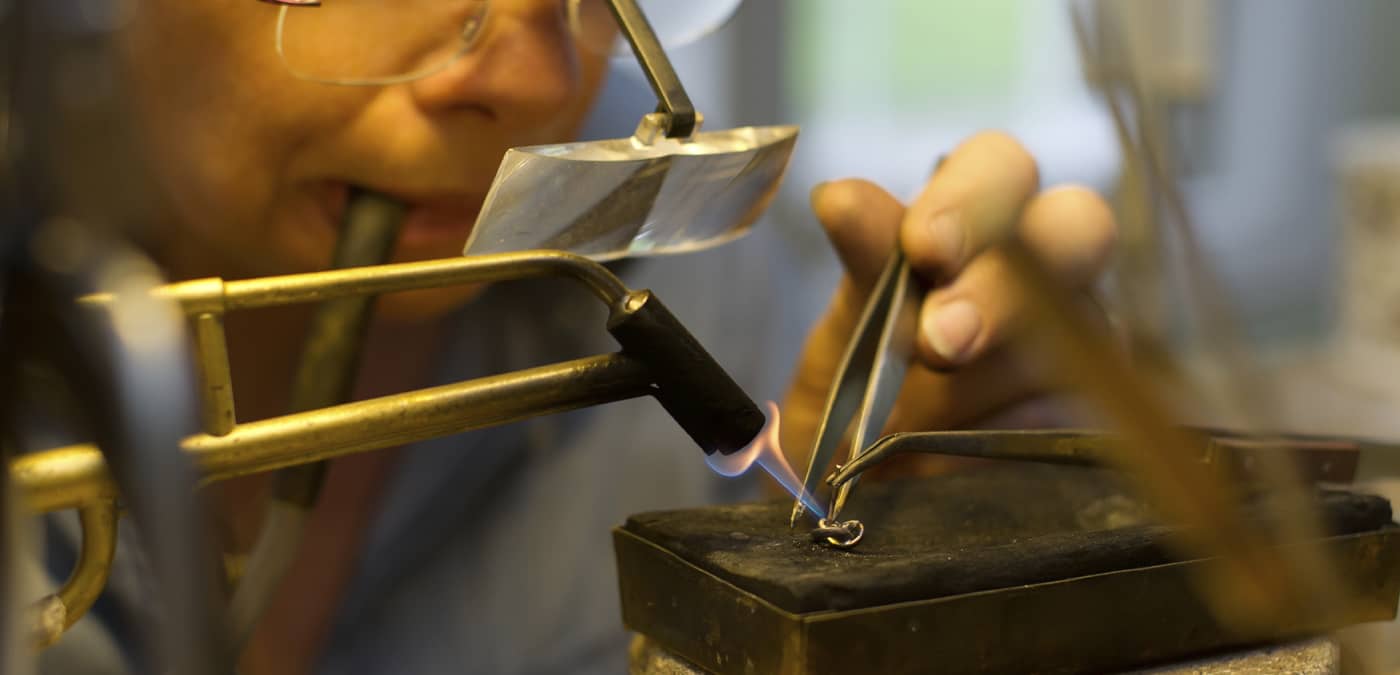Cleaning
All parts being soldered should be thoroughly cleaned. The joint areas and sheet solder must be clean, free of oxidation, oil, grease, pickle, polishing compound and tape adhesive.
Fitting
Care should be taken in the fitting of pieces to be joined by soldering. Make sure the surfaces are smooth, even, free of burrs and fit tightly. This will assure a strong, neat joint requiring less finishing.
Proper Support
Clamps or jigs should be used to align and hold objects being soldered. This will prevent movement or shifting of pieces during the joining process.
Fluxing
The entire object should be given a fire coat of boric acid and alcohol and gently heated to form a protective coating to resist oxidation. The joint areas should be well coated with solder flux to allow for flux burn off during the soldering process. The Batterns type flux commonly used will burn away very quickly and various higher temperature paste fluxes may offer better protection.
Solder Selection
The best rule of thumb is to use the hardest flow possible on each joint. For sizing rings, a hard plumb solder of the same karat will give the strongest joint. Using an easy flow solder on a ring shank will give a weaker joint that may crack under high stress.
Heating
Let the heat of the objects being joined flow the solder. Don’t try to force the solder to flow with the torch flame as this usually results in pitting or a poor quality joint. Use a steady even heat to the solder joint and surrounding metal with a soft flame before flowing the solder, keep heating until the joint is a dull red color then concentrate the heat on the solder joint area. Do not overheat. It is best to keep the torch moving to provide an even heat.
Torches
The newer micro torches and water torches have a very hot concentrated flame that can cause more pitting problems from overheating the solder joints. It is best to use a larger torch for ring sizing and larger soldering jobs keeping the micro torch for retipping or delicate work.
Multiple Joints
When making multiple solder joints, use a hard flow solder first, then a medium flow, followed by an easy flow solder. In this way progressively lower temperatures are used on each solder joint.
Removal of Fire Scale
The most common pickle solution to remove fire scale is hot sodium bisulfate solution (180 degrees F) also known as Sparex safety pickle. A 10% to 20% sulfuric acid solution or a 30% to 50% food grade phosphoric acid solution are also effective and work better when heated. Change the pickle solutions when they get dirty and add fresh distilled water periodically to replace water lost to evaporation.
Sparex is a registered trademark of Krohn Corporation.
ALL UNITED SOLDERS AND SOLDER MASTER ALLOYS ARE CADMIUM FREE
